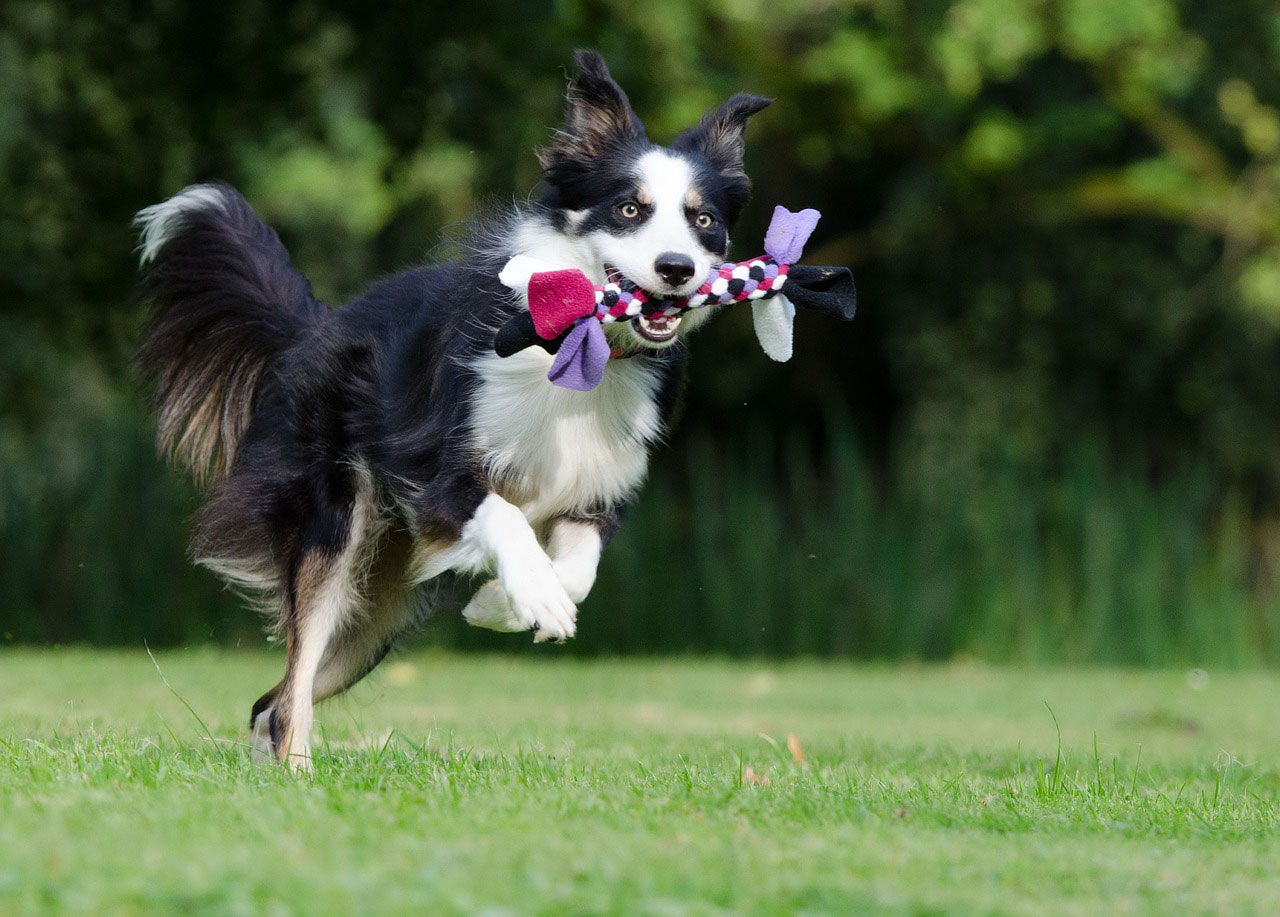
Tips for Training a Dog While You Work Full-Time
Being a grown-up is difficult—you want a new dog, but you also have to work and aren't sure how a dog will mesh with your busy life. Whether you get a new puppy or adopt an older dog, there are some basic commands and rules of your home the dog needs to learn. Sure, you can work on training during non-work hours, but what about the eight-plus hours a day you're gone?
The good news is that you aren't the only person who ever worked full-time and trained a dog simultaneously. There are many who've gone before you and narrowed down tricks for training a dog while you work.
1. Housebreak Gently
If you get a puppy, you'll need to work on potty training. Even an older dog may have a few bathroom issues and need to be retrained.
- If possible, bring the puppy home when you have a few days off work to give her time to acclimate to your household and rules.
- The younger the puppy, the more frequently they need to go outside. Either run home at lunch and on breaks or hire a dog walker.
- Talk to work about bringing your dog with you. Some offices now allow dogs as long as they're well behaved.
- Reward like crazy. When you take your dog outside or to the training pad and she urinates or defecates, praise her and give her a treat.
Keep in mind that old school tactics, such as rubbing a dog's nose in an accident simply don't work. The dog may grow confused and simply potty inside in a location you can't see.
2. Give Plenty of Exercise
Depending on the breed and age of the dog, you'll need a plan for plenty of physical activity.
- Get up a little early and take your dog on a walk before you leave for work. Repeat when you get home.
- A tired dog is a better-behaved dog. Dogs often chew things up and get into mischief because they're bored.
- Set up a safe space with a doggie playpen. Put your dog's crate and some water out so your dog has a little room to move around but not get into trouble while you're gone.
If at all possible, as mentioned above, go home on your lunch break and take your dog outside. After about four hours in a crate, your dog will need a break.
3. Crate Train Your Dog
Speaking of creates, spend time crate training your dog. This gives him a warm, cozy den when he feels lonely or afraid.
- Introduce the crate slowly and provide treats when the dog checks it out.
- Put warm, soft bedding in the crate.
- Create a trail of treats and let your dog go into the crate on his own. Give a treat. Try shutting the door and giving a treat through the grate.
Crate training your dog comes in handy when you take your dog to someone else's home or when there are a lot of people around and your dog needs a safe place to retreat.
4. Feed Your Dog While at Work
Dogs need to eat meals regularly. If you're gone eight or more hours and can't get home during that time, plan for an alternate way to feed your pooch, especially a puppy.
- Enlist the help of a neighbor or family member to feed your dog if you can't make it home at lunch.
- Invest in an automated feeder. There are many varieties on the market. Set the feeder to dispense food at the appropriate time.
- Use a camera-based system that allows you to dispense food or treats and interact with your pooch at the same time.
Set up a feeding schedule for your dog, but make sure it matches the dog's age. A puppy should eat more frequently than an adult dog.
5. Take Your Pooch to Doggy Daycare
Another popular option, although costlier, is taking your dog to doggy daycare.
- Make sure your dog is up-to-date and has had a full series of shots before sending them to an environment with other dogs.
- Seek out a daycare where like-size dogs are grouped together. You don't want your 10-pound puppy thrown into a play area with 60-pound adult dogs, for example.
- Ask if the daycare offers training. Some train your dog while it's there for an added fee.
Doggy daycare also socializes your puppy to other dogs and people. If you can't afford daycare every day, see if it's in your budget for at least a day or two a week.
Quality Time
You go out into the world and interact with other people, but your dog only has you. When you get home, give your dog some undivided attention. Play fetch, go for a walk, and pet your dog. It isn't impossible to have a dog and work full-time, even a puppy, but it does require a bit of additional effort and quality time with your pooch.
Emily is a freelance wildlife conservation and pet blogger. To check out more of her work, see her blog, Conservation Folks, or follow her Twitter account @emilysfolk.










